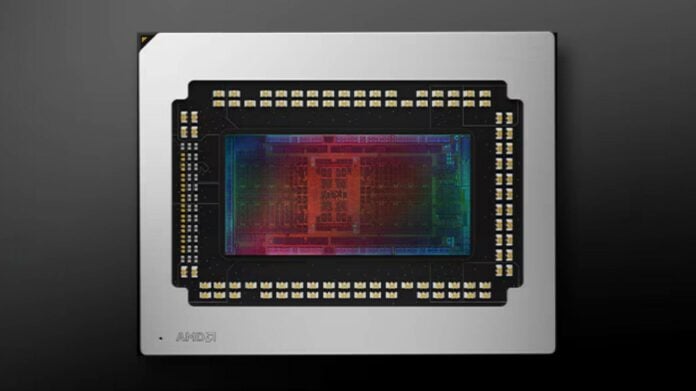AMD is seemingly returning to the high-end with its upcoming UDNA/RDNA 5 GPU architecture. According to leaker Kepler_L2, the Red Team could release a large 96-CU (Compute Unit) chip. Building a larger GPU is one way of offering higher performance, but next-gen graphics are also expected to boast higher IPC while using faster memory.
The leaker indicates that AMD could offer at least three variants – 32 CUs with a 128-bit bus, 64 CUs with a 256-bit bus, and 96 CUs with a 384-bit bus. The latter would thus carry 50% more CUs than the current flagship, the RX 9070 XT. More may be possible if the brand chooses a chiplet design. Regardless, 96 CUs should mean that next-gen Radeon will include a high-end option for enthusiasts, something that was lacking on the RX 9000 lineup.
Assuming good scaling and IPC improvements, Radeon may finally offer a worthy contender to Nvidia’s flagship RTX 5090, with some insider reports hint at a 20% boost in traditional rendering. That said, if Nvidia releases another monster chip with its upcoming RTX 6000 Series that features an even larger GPU, UDNA/RDNA 5’s 50% extra CUs will not be enough.
Regarding memory, while nothing is certain, AMD will likely go with the newer GDDR7 to extract the most performance from its new architecture. This is especially important for the high-end, where slower memory would impact performance negatively due to its limited bandwidth.
Specs aside, UDNA or RDNA 5, whatever AMD ends up calling it, should also benefit from any generational improvements and design refinements. For instance, the GPU’s ray tracing capabilities will likely improve, perhaps making path tracing usable at last. Previous rumours also claimed that AMD could go once more for a chiplet design like its Radeon 7000 series. The GPU is also said to offer three operating modes: single‑GPU mode, where all chiplets collaborate as one, independency mode, where each chiplet acts semi‑autonomously, and hybrid mode, which blends shared and independent execution to optimise throughput and latency.
UDNA/RDNA 5 will surely be an important release for AMD. The company definitely needs a strong architecture to fight Nvidia, and maybe even Intel if Celestial turns out to be powerful. Furthermore, Sony’s PlayStation 6 console is also expected to house it, which would require performance ahead of its time to handle upcoming games. The Red Team may have stepped backwards this generation to leap forward with the next.


